It isn’t just about the sound quality.
Switching from Spotify to Tidal might just be the upgrade your ears have been waiting for.
Both platforms seemed mostly similar at first glance, but our tests revealed significant factors that set them apart. We looked beyond the numbers, focusing on what really matters: sound quality, artist support, and user experience. And found that, while Spotify is undeniably the popular choice, Tidal clearly has a few aces up its sleeve.
Read on to discover the top 7 reasons that make Tidal the superior choice for your music streaming needs.
1. HiFi over High Compression
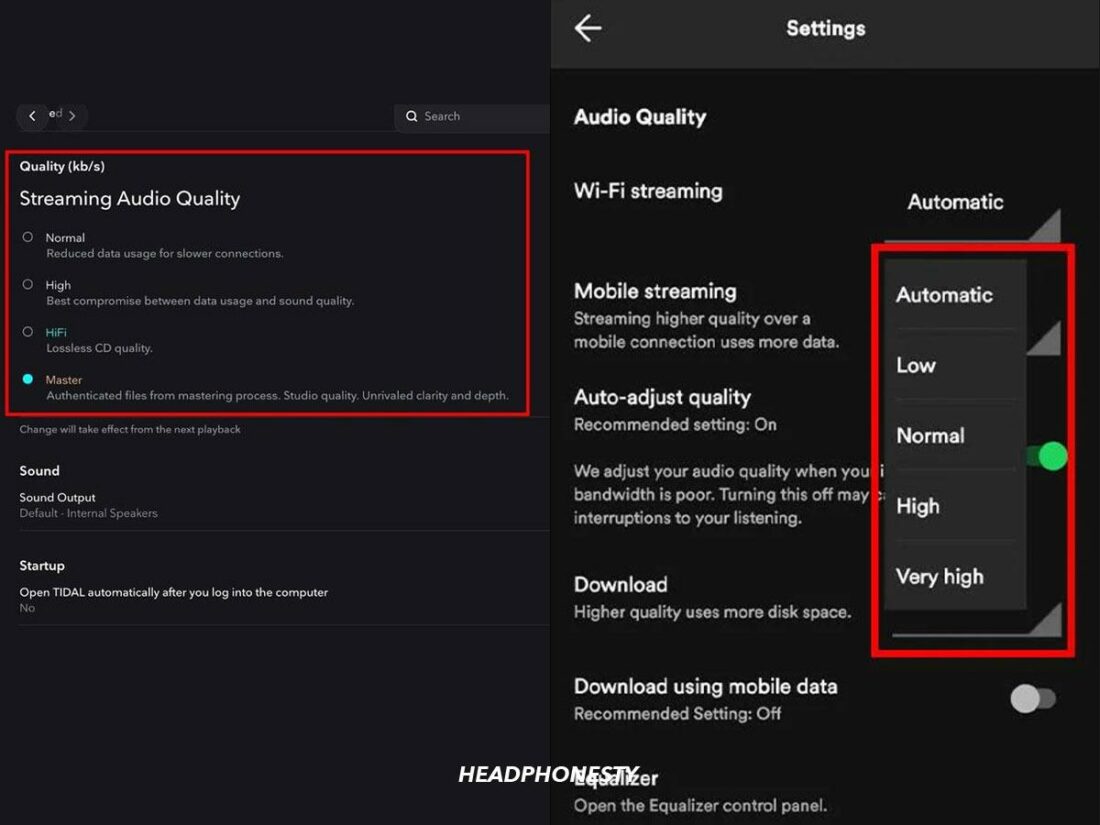
Spotify doesn’t stand a chance against Tidal in terms of sound quality.
Unlike Spotify’s max 320 kbps, Tidal HiFi offers CD-quality audio at 1411 kbps, while HiFi Plus extends this to 24-bit, 192 kHz with HiRes FLAC. HiFi Plus also supports Dolby Atmos and Sony 360 Reality Audio for a more immersive experience. This level of detail provides a stark contrast to Spotify’s compressed sounds, making Tidal the clear choice for audiophiles.
Spotify did promise to release a HiFi tier way back in 2021, but that still hasn’t materialized, so we’ll stick to Tidal for this one.
2. Substance over Volume
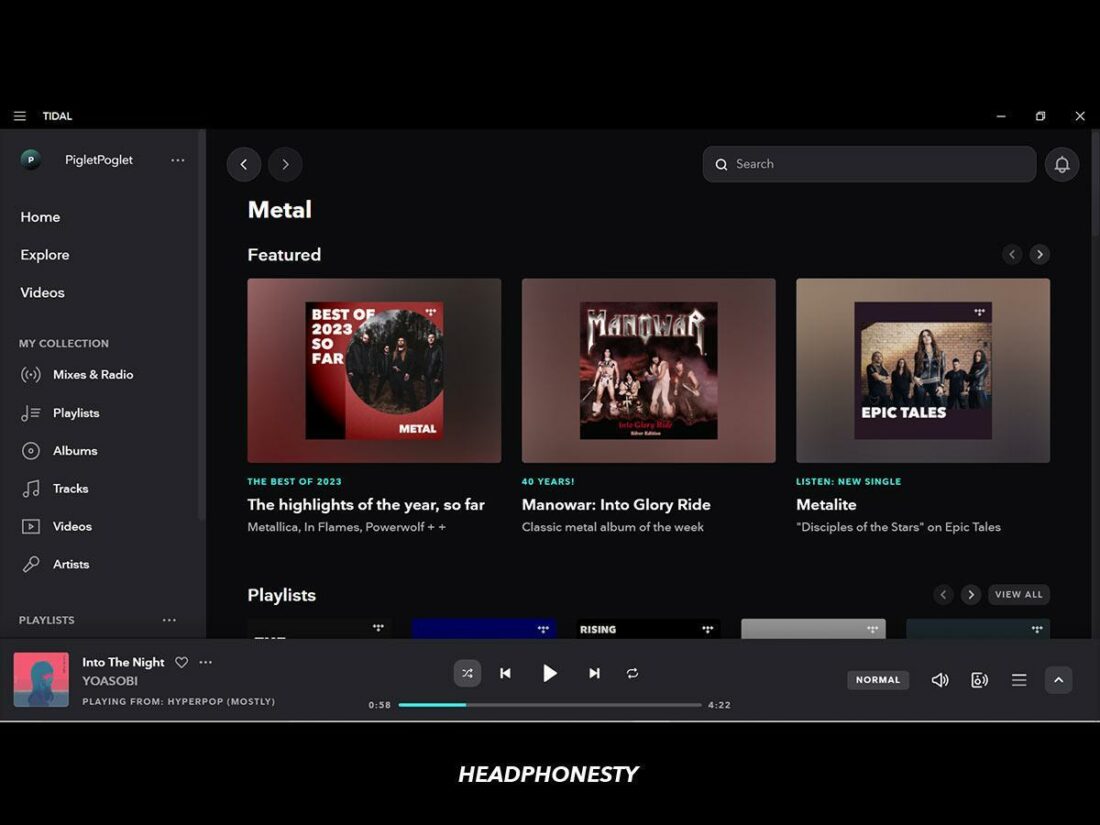
Tidal prioritizes music depth over sheer quantity.
While both Tidal and Spotify boast libraries with 100 million tracks, Tidal distinguishes itself with a strong focus on high-quality, genre-specific curation. Sure, Spotify has around 67 music genres, while Tidal only has around 25. However, Tidal’s approach enables them to provide more detailed playlists and a deeper exploration of specific music styles.
Tidal also offers an extensive video collection, including music videos and insightful documentaries, making it the preferred choice for those seeking a profound connection to music beyond the surface level.
3. Connection over Consumption
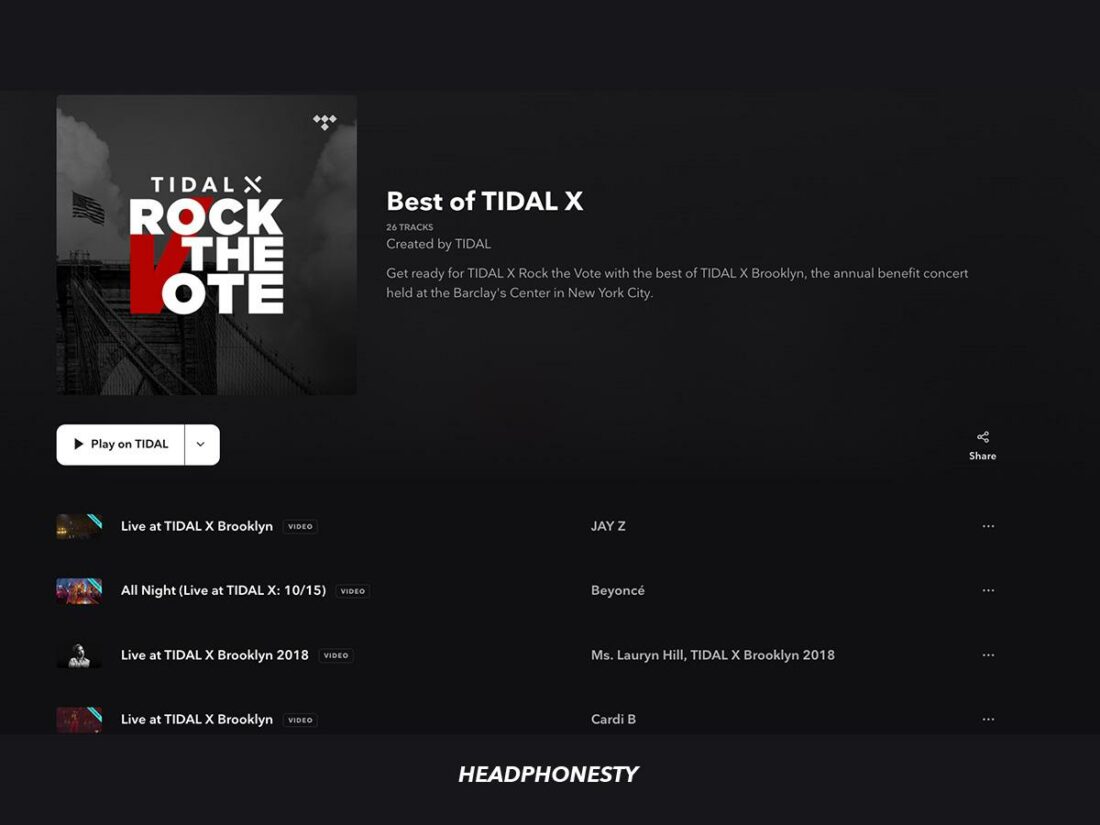
Tidal stands out by offering an exclusive connection between artists and their fans.
Unlike Spotify, which focuses solely on streaming, Tidal’s Tidal X offers exclusive concerts, meet-and-greets, and behind-the-scenes content, creating intimate experiences. This initiative not only distinguishes Tidal with its unique approach to artist-fan engagement. It also emphasizes the platform’s commitment to adding value beyond mere consumption.
This reflects Tidal’s dedication to fostering a community where music and moments are shared, not just streamed.
4. Genuine Support over Token Gestures
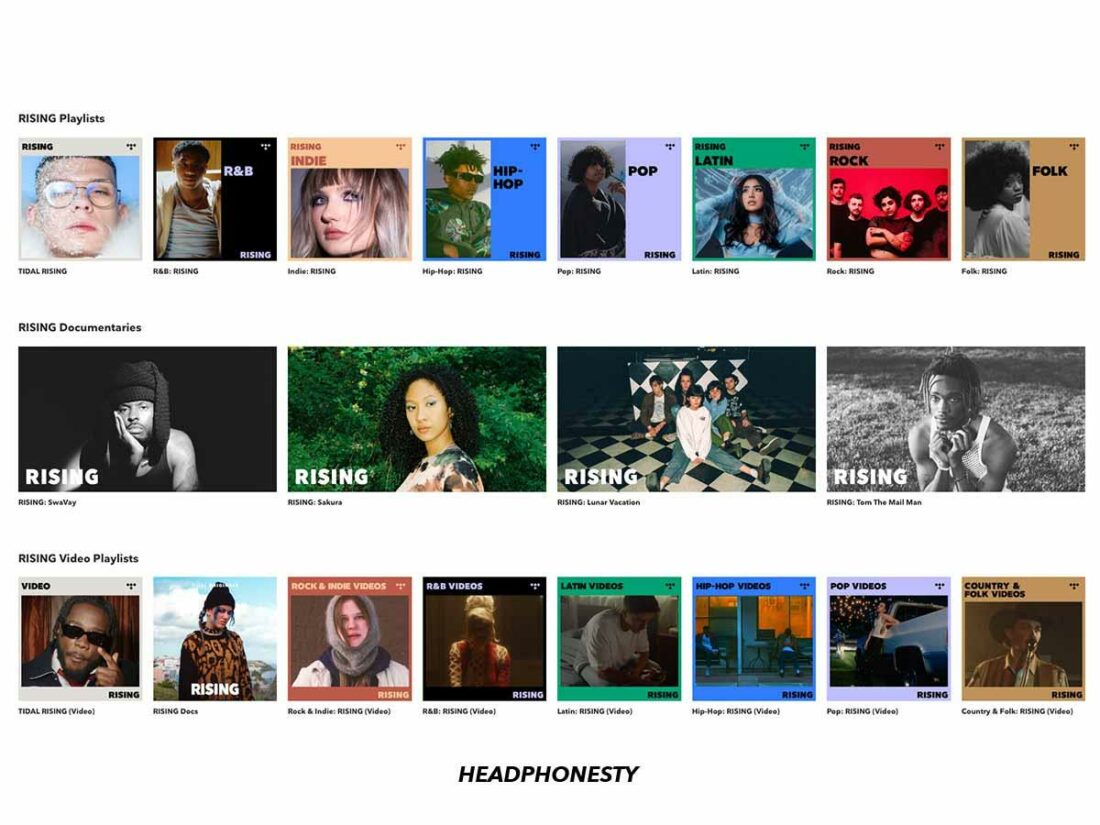
Tidal lives up to its claim of being an “artist-first, fan-centered” platform.
Tidal offers significantly higher per-stream rates of $0.013 compared to Spotify’s $0.0032 rate, making a significant difference in artists’ earnings. Beyond financial support, however, Tidal also has vast artist-focused features, such as Tidal Rising and detailed credit pages. These provide a platform for emerging artists to shine and receive the recognition they deserve.
Compared to Spotify, Tidal’s approach shows a deep investment in the artists’ success, beyond just token gestures.
5. Precision Control over Generic Settings
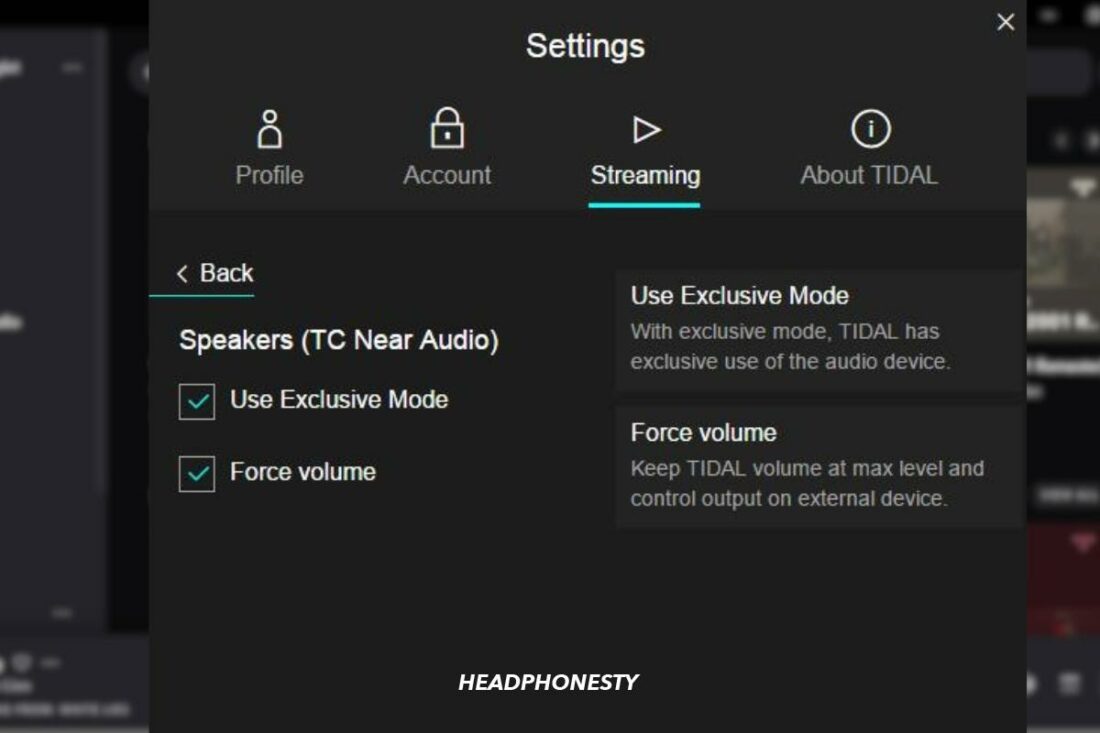
Spotify offers an equalizer, audio normalization, and transition effects to personalize your sound, but Tidal takes this to a different level.
Tidal goes beyond basic adjustments with features like Exclusive Mode and Passthrough MQA. Exclusive Mode grants Tidal direct control over the bitrate and sample rate, bypassing your device’s mixer for purer playback. Passthrough MQA enables new and older DACs to handle Master tracks without disruption, ensuring superior sound directly to listeners.
This advanced approach to sound customization means listeners enjoy the highest quality audio without compromise.
6. Visual Elegance over Conventional Design
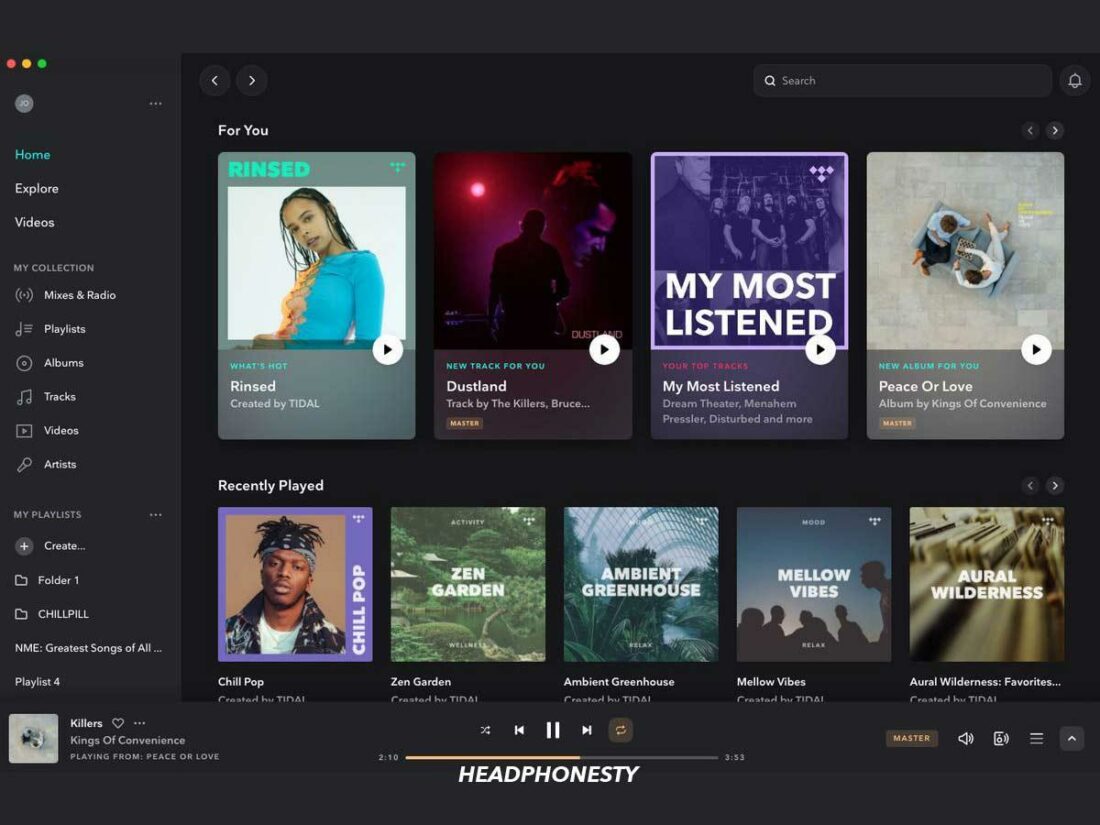
Tidal and Spotify’s interfaces share similarities, from the default dark backgrounds to their tile-based layouts.
Yet, there are little nuances in Tidal’s interface that make them better. For example, you can easily access audio quality adjustments right from the ‘Now Playing’ screen—no need to dive into settings. Tidal also has a more visually striking design, featuring contrasting blue accents that enhance its aesthetic appeal.
Spotify’s search capabilities undeniably defeat Tidal’s, but Tidal arguably has a cleaner user interface that’s easier to navigate.
7. Value over Price
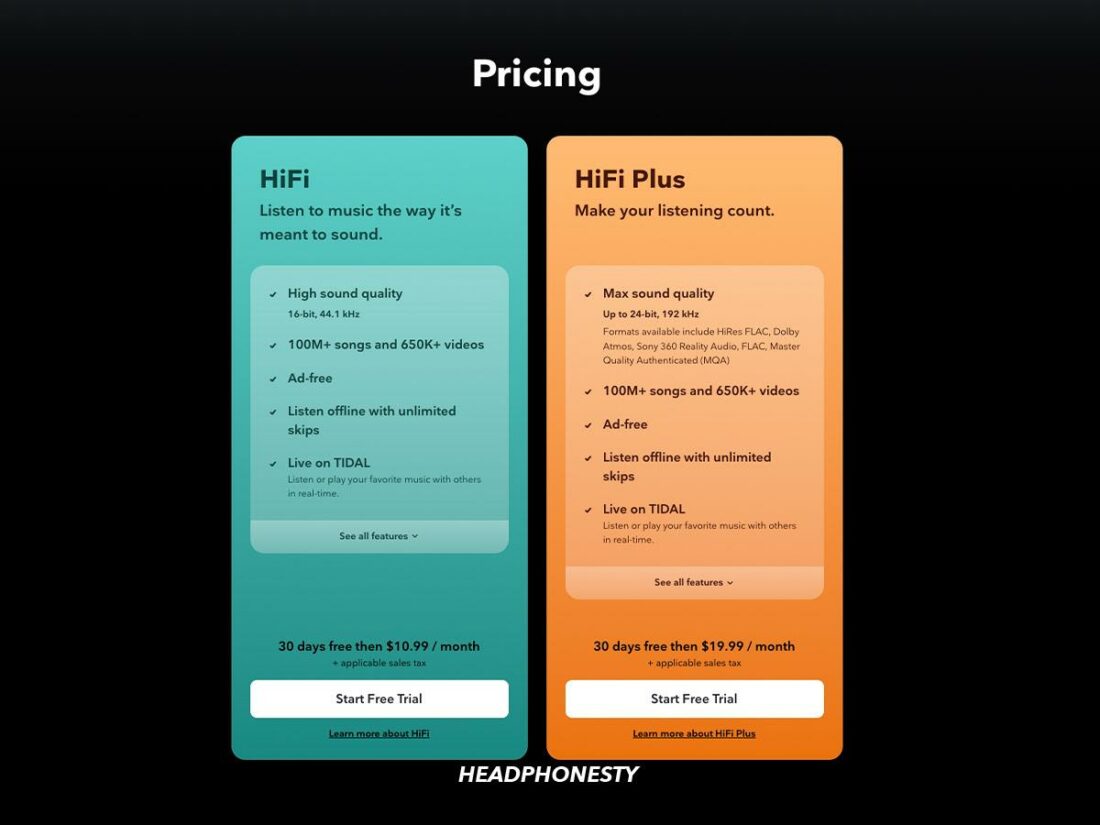
Tidal redefines the value proposition of music streaming.
While Spotify’s free tier might seem attractive, its paid options pale in comparison to Tidal’s offerings. You gain access to significantly higher-quality audio with Tidal for the same price as Spotify Premium. And, just a few more dollars unlock Tidal’s HiFi Plus plan, which offers genuine high-resolution audio and spatial audio mixes.
With Tidal, you’re not just investing in music streaming but in a better music listening experience overall.
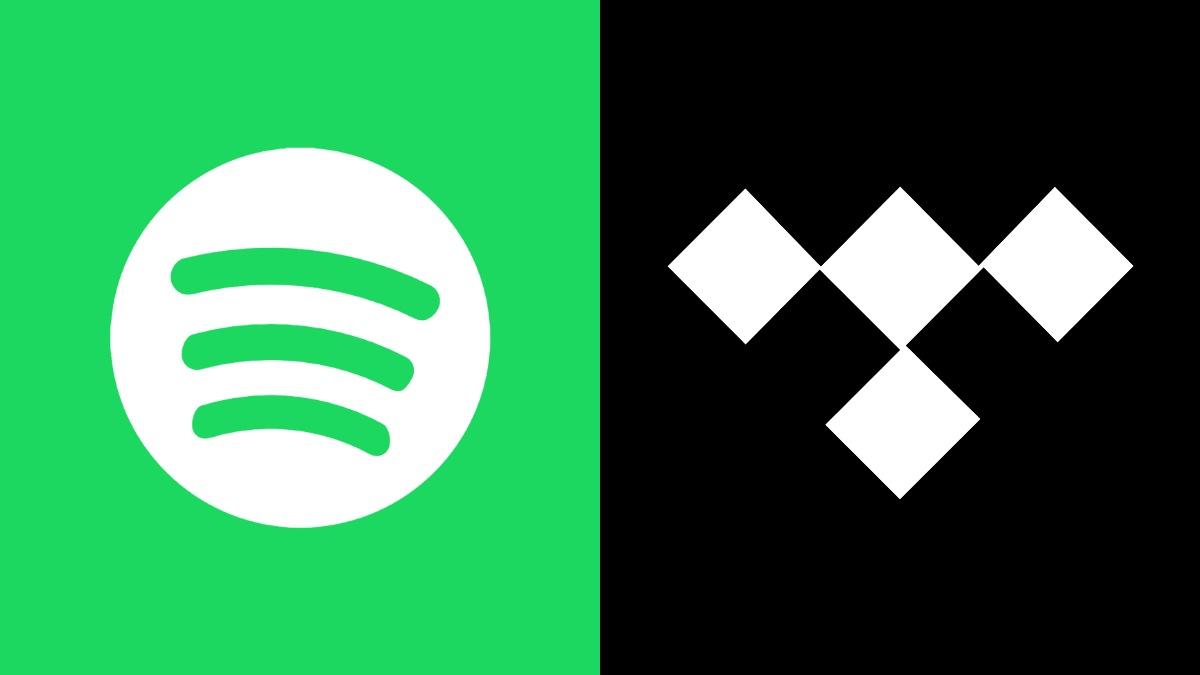
Had enough! Screw Spotify. On to tidal.